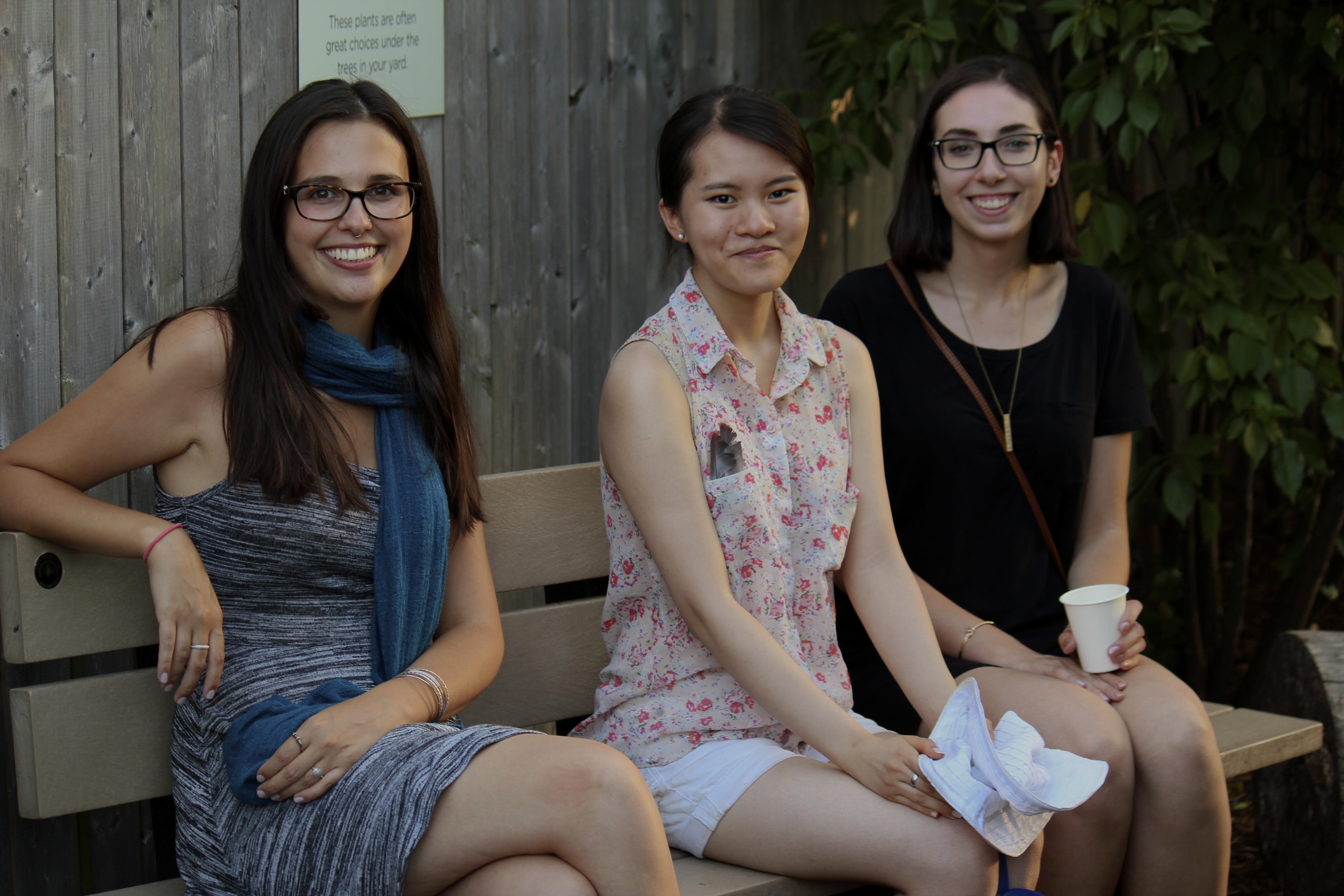Erin: How did you first become interested in the urban forest?
Lam: The word "forest" always triggered a mental image of a pristine wilderness far away from any urban development; however, I have since learned that this is not necessarily the case. While I was always interested in trees, it never crossed my mind that the network of trees in an urban setting could be a forest. The first time when I was exposed to the term "urban forest" was in the third year of university. Since then I have been motivated me to learn more about what the urban forest encompasses, the diversity of tree species in the city, the services they provide for us, and challenges they face. My appreciation for trees has driven me to enroll in the Master of Forest Conservation Program at the Faculty of Forestry at the University of Toronto to further my education and passion for the urban forest.

Erin: How did you find out about LEAF? How have you been involved?
Lam: I found out about LEAF through an internship course from the School of the Environment at the University of Toronto. When I was doing my placement with LEAF in the summer of 2016 I worked an Urban Forest Stewardship Intern. As part of my role, I worked alongside volunteers to maintain the numerous Urban Forest Demonstration Gardens across the city that LEAF has, participated in community engagement, and worked on other programs they run throughout the city. One such program that I was a part of was the Young Urban Forest Leaders Program in the summer of 2016. Through this, I had the opportunity to work with a team of two other amazing ladies to inventory Chester Le Park and create a Stewardship Plan for the local community. Currently, I am a general volunteer with LEAF.

Erin: Please share an “ah-ha” or defining moment you had while volunteering/working with LEAF.
Lam: Toronto is a great place to live in because we have quite a large percentage of canopy cover, which translates into a lot of trees across the city. While working and volunteering with LEAF, I was exposed to the reality that most urban trees face. Whether it's from poor planting, being placed in an area that it is not suited for, faced with risks of physical damage, infestations, infections, and even machinery, trees in our city are up against a lot of challenges. These problems are compounded for newly planted trees that also have to cope with transplant shock after they have been removed from the nursery and planted in the city. Often times newly planted trees, especially ones on public property, don't receive enough aftercare in the form of mulch or regular watering, and as a result, many experience decline and die. LEAF has opened my eyes to seeing trees in the city as living things in need of tender love and care, rather than inanimate objects that can be placed in the ground and forgotten about.

Erin: Why is the urban forest important to you and what message would you like to share with others to encourage them to become involved?
Lam: The urban forest is important to me because it provides a number of ecosystem services or benefits to our own well-being as well as the ecosystem around us. These include, but are not limited to, mitigating the urban heat island effect by providing shade, cleaning the air and removing pollutants, sequestering carbon, reducing stormwater runoff, creating habitable spaces for us and other animals, providing recreational areas, embodying spiritual values, and being aesthetically pleasing. Having a healthy and diverse urban forest is part of the foundation for a high quality of life in the city, that promotes healthy physical, mental, and spiritual well-being, while encouraging resiliency and sustainability in the city. Creating a healthy urban forest may seem daunting for one person, but if we all pitch in to become a steward of a few trees or even one tree today, then it can make a big impact later down the road! To do this we can properly manage the trees on our property or plant new native species, get involved with local community groups to water and mulch a set of public trees in parks or along the street, tell our friends and family about the importance of trees and stewardship, or become a volunteer with organizations such as LEAF that promote a healthy urban forest. Trees are living, breathing, green infrastructure that will benefit from a helping hand from us and undeniably provide a whole host of benefits and services as a large network of trees in our urban forest.
Photographs taken by Torie Gervais and Erin MacDonald.
Erin MacDonald is LEAF’s Volunteer and Stewardship Coordinator.
